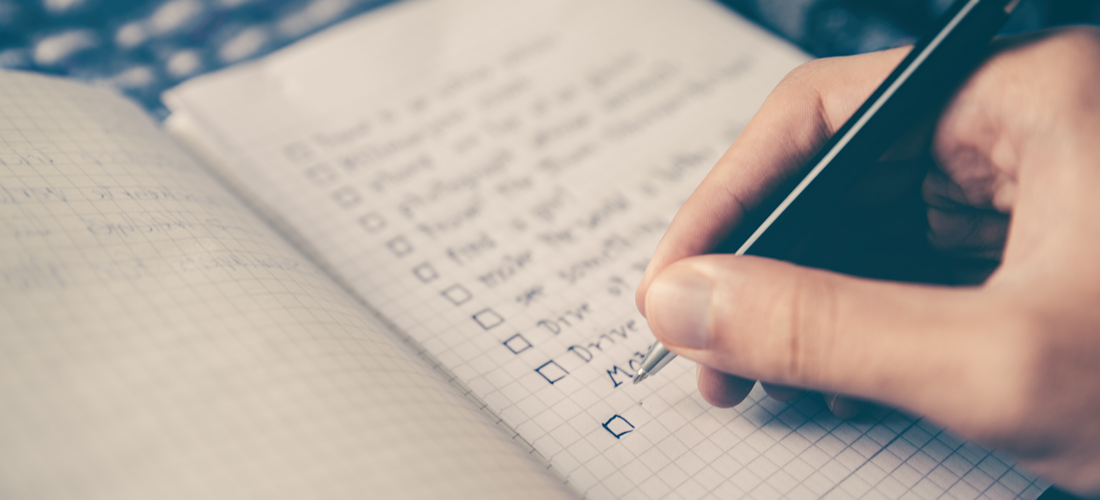Are you finding it hard to remember crucial information from your lectures or meetings? Do you often find yourself scrambling through your notes, unable to decipher what you wrote? If your answers are yes, then we’re here to help you fix that. Welcome to our blog post on ‘Effective Note-Taking Strategies.’ In this guide, we’re going to share some proven techniques to improve your note-taking skills. These strategies will not only help you jot down the key points but also make your notes easy to understand and review. So, let’s dive right in and set you on the path to success with effective note-taking!
Note-Taking Strategies
Effective note-taking is a valuable skill that can help you retain information, stay organized, and improve your understanding of the subject matter. Here are some effective note-taking strategies to enhance your note-taking abilities:
1. Choose the Right Note-Taking Method
Choosing the right note-taking method is crucial for effective learning. There isn’t a one-size-fits-all solution here; what works best for you may depend on your learning style, the nature of the material, and other personal factors. Experiment with different strategies and see what sticks. Remember, the goal is not just to transcribe information, but to actively engage with it and make it easier to recall later on.
- Cornell Method: Divide your paper into three sections – a narrow left column, a wider right column, and a section at the bottom. Use the right section for your main notes, the left for cues or questions, and the bottom for summaries.
- Outline Method: Create a hierarchical structure by using headings, subheadings, and bullet points to organize your notes.
- Mind Mapping: Create visual diagrams with a central concept and branches to represent related ideas or concepts.
- Sentence Method: Write down key ideas in complete sentences, focusing on clarity and brevity.
2. Be Engaged and Use Active Listening
Instead of simply transcribing everything your instructor says, strive to actively comprehend and engage with the material. This includes asking questions, making connections to previous knowledge, and seeking clarity about confusing points. By doing so, you’re not just passively recording information, but actively processing it. This helps to cement the knowledge in your mind, making it easier to recall when it’s time for review or exams. Remember, the goal of note-taking isn’t to create a verbatim record of everything said, but to distill the most important points into a format that makes sense to you.
3. Use Abbreviations and Symbols
One powerful note-taking strategy that you can adopt is the use of abbreviations and symbols. This approach is particularly effective when you’re dealing with complex information or when the pace of the lecture or presentation is fast. By using abbreviations and symbols, you reduce the time spent on writing, enabling you to capture more information. For instance, you could substitute ‘and’ with ‘&’, ‘with’ with ‘w/’, or ‘number’ with ‘#’. Now, remember, the key to this strategy is consistency. Make sure you use the same symbols and abbreviations consistently to avoid confusion when reviewing your notes.
4. Be Selective
Selective note-taking is a highly effective strategy that you should definitely consider. The goal here isn’t to transcribe every word uttered in a lecture or scribble down every line of a textbook chapter. Instead, the focus is on capturing the key points, main ideas, and crucial details. The beauty of this strategy lies in its efficiency. By forcing yourself to discern the important from the trivial, you’re essentially processing the information as you hear or read it. This way, not only do you end up with concise, easy-to-review notes, but you also enhance your comprehension and retention of the material right from the get-go. Remember, it’s all about quality, not quantity.
5. Use Highlighting and Color Coding
Using highlighting and color coding is an effective note-taking strategy that can make your notes more organized and easy to recall. When you use different colors in your notes, you’re not just making them more visually appealing, you’re creating a system that allows your brain to associate certain colors with specific types of information. This could be assigning one color for definitions, another for examples, and another for key points.
When studying, this color-coded system will help you easily navigate through your notes and better retain the information. Remember, though, the key to effective highlighting is moderation – you should aim to highlight only the most significant points, so they stand out when revisiting your notes.
6. Organize Your Notes
Organizing your notes effectively is a critical step in the note-taking process. You might think of it as tidying up your mental workspace. With a well-organized set of notes, you can easily find the information you need when you need it, and you’re less likely to overlook important details. A variety of methods can be used to organize your notes, including headers, bullet points, or numbering, as well as highlighting or underlining key points. Some people prefer using visual tools like diagrams or mind maps.
Remember, there’s no one-size-fits-all approach here. The key is to find a system that works best for you and stick to it. This can greatly reduce stress when exam time rolls around, and allow you to utilize your study time more efficiently.
7. Review and Revise Regularly
Reviewing and revising your notes regularly is a remarkable strategy to reinforce your comprehension and recall of the information. You might feel that you’ve understood a concept during a lecture or a meeting, but the real test of knowledge occurs when you revisit the material. Try to review your notes within 24 hours of taking them, as studies suggest that we forget up to 50% of newly learned information within a day.
Regularly revising your notes helps you identify gaps in your understanding and fill them before they become problematic. You’ll also find that this habit makes it much easier come revision time, as you’ve been steadily preparing rather than trying to cram in all the information at once.
8. Practice Active Summarization
Periodically summarize the main points of your notes in your own words. Instead of just transcribing what you hear or read, this approach encourages you to paraphrase the information in your own words. The process of summarizing requires active engagement with the material, which prompts deeper comprehension and long-term retention. You’ll find yourself better equipped to recall key concepts and details, and you’ll be more prepared when exam time rolls around. So, the next time you’re jotting down notes, don’t just copy – summarize actively and experience the difference!
9. Use Digital Note-Taking Tools
Leveraging digital note-taking tools is a game-changer for keeping your notes organized and accessible. These tools, such as Evernote or OneNote, allow you to capture ideas, compile materials from various sources, and quickly locate information with a simple keyword search. Digital note-taking often offers the flexibility to sync your notes across multiple devices, meaning you can access and update them whether you’re on your laptop at home, or using your smartphone on the go.
Plus, with the added benefit of multimedia capabilities, you can diversify your notes with images, voice memos, or even video clips. So, if you’re someone who’s striving to step up your note-taking game, consider going digital. It could be a strategic decision that boosts your efficiency and productivity.
10. Create Visual Aids
Instead of solely relying on text, why not tap into your visual intelligence? Drawing diagrams, flow charts, or even doodles can help you understand complex concepts. Graphical elements can act as memory triggers, letting you recall information more easily. For instance, if you’re studying a process, a flowchart can depict the steps in a clear, concise manner. Similarly, if you are dealing with hierarchical information, you could create a tree diagram. So go ahead – harness the power of visuals to enhance your note-taking and learning experience.
11. Use Sticky Notes and Flags
Utilizing sticky notes and flags can significantly boost your note-taking efficiency. Imagine you’re reading a dense textbook, and you come across some key points that you’d like to remember or reference later. Instead of jotting down everything on a separate sheet of paper, you can simply stick a note or flag right on the page. This method allows you to quickly locate important pieces of information without having to flip through every page.
Moreover, it’s a great way to break down complex ideas into digestible chunks. You can color-code your notes or flags to represent different categories, making your studying process more organized and effective. So next time you’re faced with a hefty amount of reading, remember to arm yourself with a pack of sticky notes and flags!
12. Try Collaborative Note-Taking
Collaborative note-taking is an effective strategy that can enhance your learning experience remarkably. This method involves multiple individuals taking notes on the same topic and then sharing and combining their insights. Here’s how it works: You and your peers attend the same lecture or read the same material, but you each write your notes separately. Then, you gather and merge these notes together.
You’ll be amazed at how different perspectives can illuminate aspects of the topic that you hadn’t considered. It’s like viewing the topic through multiple lenses, which can fill gaps in your understanding and add depth to your knowledge. Just remember, this strategy thrives on diversity, so try to collaborate with people who have different thinking styles or backgrounds. This way, you’ll get the most out of collaborative note-taking.
13. Stay Consistent
Establish a consistent note-taking routine to build a habit.Consistency is your best friend when it comes to effective note-taking. Imagine this: You’re reviewing your notes a few days before an important exam, but your notes look chaotic, with information scattered everywhere. It’s almost like trying to put together a puzzle without having the picture on the box. Sounds stressful, right? That’s where staying consistent comes in! By using a consistent format or structure for your notes, you create a roadmap that your brain will thank you for later.
Maybe you always start with the main idea at the top, followed by related points and examples. Or perhaps you use bullet points for facts, and asterisks for your own thoughts or questions. Pick a system and stick with it. Over time, you’ll get used to your own structure, making note reviewing a breeze rather than a scavenger hunt.
Remember that the effectiveness of note-taking strategies can vary depending on your learning style, the subject matter, and the context. Experiment with different methods and adapt your approach to suit your specific needs and preferences. Ultimately, the goal is to create notes that serve as a valuable resource for your learning and reference.
Conclusion
Effective note-taking strategies can significantly impact your learning journey. Remember that it’s not about copying everything verbatim; it’s about summarizing and organizing information in a way that works for you. Whether you’re a fan of the Cornell Method, Mind Mapping, or prefer good old linear notes, the key is consistency. Keep refining your process until you find what works best for you. After all, your notes are your personal learning tool to help you grasp new concepts and remember them long term. So give these strategies a try, and here’s to your success in your learning endeavors!
You might also like:
- 12 Useful Strategies for Overcoming Learning Burnout
- 9 Key Benefits of Microlearning for Effective Knowledge Retention

